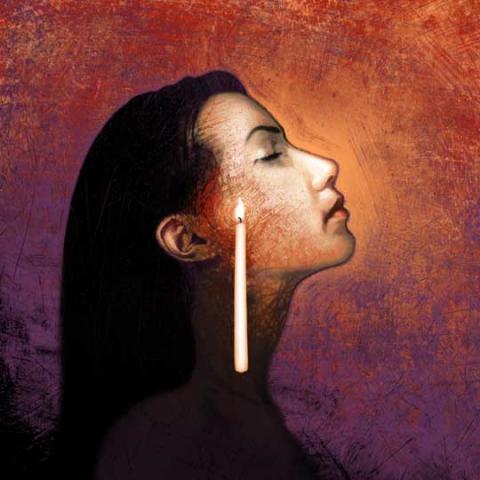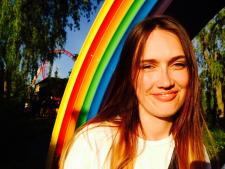One question I ask other writers is what sounds stimulate their writing––silence, electronica, mud pools, rain showers, foreign film soundtracks, a woman in the next room boiling water. This is because I have a particular kind of synesthesia, known as chromesthesia, in which many pieces of music I hear are twinned with distinct visual experiences. There are exceptions, and in those cases, the sounds can induce a full range of emotional responses with no visual complements. Occasionally, certain sounds are paired with physical forms; fingertips moving up and down my legs, let’s say, for Frankie Knuckles’s “The Whistle Song,” or a silver substance with the texture of water gradually covering my body, for T. Rex’s “Cosmic Dancer.” This is sometimes known as hearing-touch, or sound-touch, synesthesia.
Figures seem to differ significantly, but it is safe to say that synesthetes make up a small portion of the general population, and a slightly (or appreciably) larger portion of those who consider themselves to be artists. I don’t think this is because synesthetes are any better equipped to harness the light source of language, or music, or film. Top-drawer artists may be better equipped to be inspired by others, though. Because that shit is magic, and once you realize you can experience life through that energetic prism, would you not want to summon it as often as possible? It has the same charge as a forceful emotional experience, the flush we seek when living through a series of pale days.
The first time I experienced synesthesia I was listening to a song by my all-time favourite artist, of any medium, Prince. “The Beautiful Ones,” the third song on the Purple Rain soundtrack. The only way I can describe it is this: I was a candle in a cross-breeze. My self was flickering. Beyond the physical sensation, I could actually see the smoke coils. It was my first time witnessing a song expand beyond its own auditory build. Everything changed. I was newly aware that poetry could sunburn me. On a spiritual level, I knew a drum kit could break my neck.
I have cried a lot since Prince died. I have had trouble finding any song or sound to spark the synesthesia, which I have decided, for whatever reason, has an immutable place in my writing process. But this morning I listened to “I Can’t Love U Anymore,” an unreleased, unparalleled demo track he recorded in Melbourne in the early 90s, and something new appeared.
What appeared, I understood, was the physical form of grief. A simplified analogy, for the sake of communication, is that it was a see-through rain jacket. I put it on. And it belonged to a person I used to love, a person I used to listen to Prince with in a holy way. And it was sadness. For a while after the song finished, I was still wearing it. Then I was not.
Maybe I will experience that same thing in my own writing practice, wearing the grief for a while, then not. Or maybe that sensitivity, one so intense it claims a physical form, or a place in the rainbow, can only exist for me as a response to another’s art, Prince’s most of all. I don’t know when, or how, the response will happen. That is why I listen, and read, and get jazzed about the efforts of all the brains and hearts around me. I do that at least often than I write. I see more colours that way.
Illustration by Matt Manley. Matt has been working as a freelance illustrator for over twenty years. His illustration is primarily figurative and symbolic with surrealist leanings, and past client work includes editorial, corporate, medical, book, and higher education. Though in the end his work is technically digital collage, the process integrates both traditional and digital media. Collage elements are original oil paintings and drawings, with occasional scanned found objects and photos added to the mix, all united in Photoshop .




